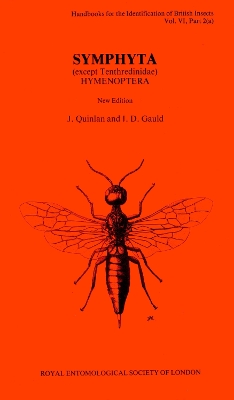Royal Entomological Society
1 total work
The Symphyta is by far the smaller of the two suborders of Hymenoptera and world-wide includes about 10,000 species grouped into 1,000 genera and 14 families. About 500 species in 110 genera and 11 families occur in Britain. Symphytans are distinguished from Apocrita by the lack of a marked constriction between the 1st and 2nd abdominal segments. All (except the Cephidae) possess a pair of characteristic metanotal protuberances, the cenchri, which are not found in any other Hymenoptera. Symphytan larvae are generally caterpillar-like with a well developed head capsule and legs, unlike the legless, maggot-like larvae of Apocrita. The Symphyta includes the most primitive of all Hymenoptera and the wing venation of Xyelidae and Megalodontoidea is the most generalised found in the order. Sawflies are well represented in the fossil record and a number of familiies, especially Xyeloidea, are now extinct. The oldest known fossil hymenopteran is Liadoxyela praecox Martynov, a xyeloid from lower Jurassic beds in Turkestan. It is probable that the Symphyta arose very early, possibly in the Permian, and radiated in the Mesozoic conifer forests with species later becoming adapted to angiosperms. even today a large proportion of sawflies are restricted to gymnosperms and the more primitive angiosperm families. The majority of Symphyta occur in temperate latitudes and even groups such as the Selandriinae, which are predominantly tropical, are most common at higher altitudes. This handbook deals with all families except the Tenthredinidae and includes 83 species or about 20% of the British Symphyta. The taxonomy is based primarily on Benson (1951) but introductory sections on morphology, biology, collecting etc. and new figures have been added and keys improved and simplified where appropriate. New distribution records have been added and extensive lists of non-British distributions deleted. The family Tenthredinidae is dealt with by Benson (1952, 1958).
